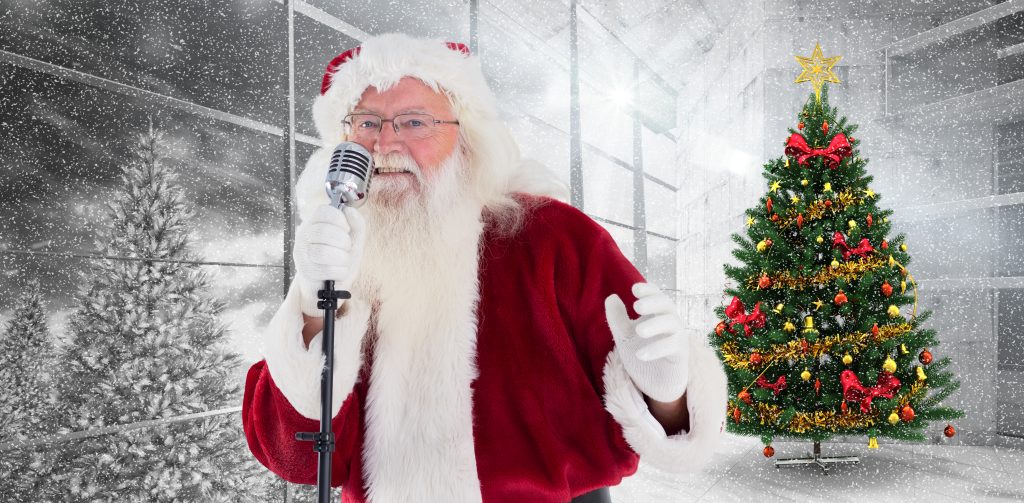In the 19th century, the Church (with help from business interests) managed to remake Christmas, transforming it from an unruly public affair into a quiet domestic occasion. Accordingly, carols, now sung in churches and homes as often as in the streets, became more reverent than rebellious. Think “The First Noel,” “O Holy Night, “We Three Kings,” and “Silent Night,” all products of this era.
Thanks to commercial capitalism, this quiet period was short lived. In the late 19th and early 20th century, retailers, advertisers, and artists created a holiday of conspicuous consumption. This reimagining of Christmas gave it yet another public expression, although one more built around shopping than drinking and carousing. (Of course, the boozy dimensions of Christmas never went away, as scores of office parties and the annual SantaCon fiasco still attest.)
In this context, carols and songs accelerated Christmas’s commercialization, although not without controversy. Songs like “Santa Claus Is Comin’ to Town” (1934) and “Nuttin’ for Christmas” (1955) emphasized the holiday’s materialistic motives and helped push products. The classic “Rudolph the Red-Nosed Reindeer,” embroiled in its own controversy this year, began as a story to promote Chicago’s Montgomery Ward department store in 1939 before being turned into the popular song a decade later. That version, recorded by Gene Autry, climbed to the top of the Billboard pop-singles chart for the week of Christmas 1949 and sold 2.5 million copies in its first year.
The explosion of commercial-oriented Christmas songs in the 20th century was good for the music business, but arguably bad for the faithful: It made many Christian leaders worry that the holiday’s real meaning—especially for children, who were advertisers’ chief targets—was being lost. Religious authorities who once condemned Christmas carols for paying homage to pagan gods and celebrating libidinous pleasures now fretted that Americans were really worshipping the great god of consumerism through the songs they sang about Santa, presents, and the Christmas tree.
Nowhere has the debate about Christmas songs been more fraught or fierce than in the nation’s public schools. While conservatives often depict disputes over public-school holiday programs as a recent development in the “post-Christian” era of political correctness, parents, teachers, and communities have butted heads over the contents of these school assemblies since public schools first started holding Christmas pageants in the late 19th century. In one early example, 20,000 Jewish students stayed home from the New York City public-school system in 1906 to boycott their being forced to take part in a required holiday program that featured only Christian content. “We wonder what the Christian population would say,” The Jewish Daily News observed at the time, “if there were introduced in the schools … Chanuca [sic] exercises in commemoration of the Maccabean victory.”

